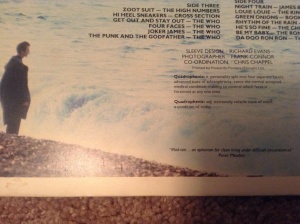What Is Mod?
We all know what we’re talking about, or at least we all think we know, but how do we define it?
At least those growing up in England have some frame of reference, even of it is to the lazy public image of parkas, scooters, beach fights and Quadrophenia, but none of this is in the public psyche of the average American. If they are aware of the term at all, they are likely to think it refers to The Beatles and ‘Swinging London’ (if they are old enough to remember either), or else psychedelic graphics and Austin Powers clothes.
Anyone who has held a copy of The Who’s Quadrophenia Original Soundtrack album is likely to be familiar with the quote from erstwhile Who / High Numbers publicist and original Mod face Peter Meaden, who claimed Mod-ism was ‘an aphorism for clean living under difficult circumstances’. It doesn’t really help does it? That could describe my house-proud grandmother whose kitchen was always spotless despite her fixed-income pension.
Attempts to define Mod bring to mind American Chief Justice Potter Stewart who in searching for a way to describe pornography in 1964 resignedly stated, ‘I know it when I see it’.
There are probably as many definitions of Mod as there are Mods, each bringing their own individual slant, which explains the broad range of styles on show at any Mod gathering or displayed in photographs within the covers of the many books on the subject. This is a result of the continual and rapid evolution of styles that occurred during the erratically changing sixties which have been adopted and adapted by successive revivalists. Mod style is an attitude and attention to detail, set apart from the broader collection of style enthusiasts by almost always having some influence from the first half of the nineteen-sixties, but beyond that, attempts to be more precise are likely to fail. Perhaps that’s the beauty of it – there’s something for everyone – plenty to reject, and still plenty remaining to admire and aspire towards.
